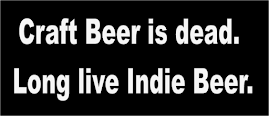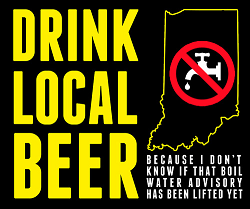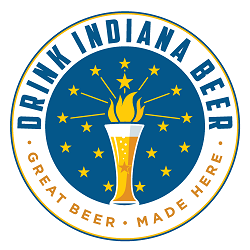THE PC: One fine evening at the Zlatý Dukát.
A weekly web column by Roger A. Baylor.
Drink beer with bitter hops, eat morning soup with garlic, and you will live long.
-- Central European proverb
In 1991, pre-dating my pub career by a year, I was fortunate to have the opportunity to indulge a dream. Communism had fallen, and suddenly there were opportunities for English-speakers in Eastern European countries where language instruction in Russian had not prepared people for the newly opened worldwide market.
Working through a now defunct agency, I landed a job at the teaching hospital in Kosice, the largest city in eastern Slovakia -- then still part of Czechoslovakia, and not a territory known for its beer.
It didn't matter, and I've never regretted for one moment accepting the first placement that came my way. I've been back to Kosice several times since 1992, though not since 2002; unfortunately, I’ve lost touch with the people mentioned below. Meanwhile, Slovakia is independent and a member of an expanded European Union. I hope they’re all doing well.
The article, entitled "An Evening on the Town," originally was written in 1992. I’ve touched it up a bit for publication here.
---
Jozef, a dentist, was a late addition to the roster of my conversational English class. He had attended only once prior to a Friday afternoon session in early November, yet even in his absence, I formed a firm opinion that the two of us had more in common than stature.
A big man with a relaxed, open outlook, Jozef played hockey and soccer in the semi professional Slovak leagues of the recently ended Communist era.
My hunch that we were thinking alike was borne out during that same Friday afternoon class, when I noticed his eyes widen as I told the group about my forthcoming cross-country rail pilgrimage to Plzen, home of the Pilsner Urquell brewery.
Wearing a sly grin, Jozef approached me at the end of the hour. "On next Wednesday," he said, "what will you do at night? May we make a meeting? We can go to a good restaurant in Kosice for beer, and my colleagues will go, too."
There were no objections from the lectern.
After class on the appointed evening, Jozef reminded me to meet him and the others in the hospital's main lobby at 5:00 p.m., and when I came down the stairs, he was waiting. Two other students, Ludmila and Vladimir, also were there.
Together we piled into Jozef's weather beaten, dull red, four door Skoda. It isn't easy to place a year of birth on Communist era cars, since the same models were reissued again and again; over the rumbling of the engine, I guessed it was a 1970 model. The other passengers laughed heartily. It was a '79.
We sputtered from the hospital parking lot and lurched downhill toward the center of Kosice, past the 130 year old city brewery (since closed) onto Vojenska Street. The Skoda veered right and slowly accelerated up Moyzesova, then left into the pitch black of Malinovskeho.
Everyone laughed at the provincial ambience of the unlit, deserted street. "It is like Las Vegas, yes?" said Vladimir, and Ludmila answered: "yes, Las Vegas in Slovakia."
"Do you know this street?" asked Ludmila. "We go to the back way," said Jozef. "It is better to park."
The brawny dentist gently eased the Skoda into a space. The car coughed rudely. We began walking, passing through an arched alleyway with chipped, peeling walls, entering a courtyard dotted with stacks of rotted building materials.
The back door to the Zlaty Dukat (Golden Ducat) was open, and behind a veil of steam the kitchen staff was busy. A greasy man in a well traveled black suit seemed absolutely delighted to see us. We were greeted warmly, and he nodded knowingly as Jozef spoke.
We were led to the large ground floor room where clusters of local men and an occasional woman sat at small, square tables no music, no television, just Slovaks seated in groups, drinking, smoking and talking. The room was devoid of decoration apart from standard issue 1950s vintage curtains and a scattering of yellowed Pilsner Urquell posters high up on the walls.
Plumes of acrid cigarette smoke rose from the tables and were dispersed by the lilting motion of a single waitress navigating the floor with a tray of half liter draught beers held expertly aloft, so as to avoid the unconscious gesturing of the thirsty storytellers.
The man in the black suit ushered us into a curtained cubicle marked as "RESERVE" with a hand lettered strip of paper. The cubicle was to be our refuge for the evening. In a space the size of a walk in closet there were six chairs, a table and hooks on the wall for coats. It was intimate, to say the least.
Having settled into our seats and dispensed with small talk, it was time for the business at hand. Jozef ordered four beers. Ludmila leaned over and asked me if I wanted to eat; I was reminded of a German war bride, a Hollywood character actress or a Gabor sister as she spoke good, though heavily accented, English.
Jozef abruptly announced his unshakable preference for a dish called t'lacinka: "Do you like our food?" he asked. "T'lacinka is Slovak food of tradition. At this restaurant, it is very good. Okay?" He literally smacked his lips.
"Maybe it isn't so good for you," said Ludmila. "Maybe your stomach is not good for our Slovak food." Vladimir laughed. Jozef looked dismayed. "No, no," he said, "it is best food for beer. We eat t'lacinka and drink beer. Yes?"
Yes, I agreed.
The beer arrived. One taste confirmed that it was Pilsner Urquell. Three tastes later, it was gone. So was Jozef's. Vladimir, good natured and quiet, abandoned his half full glass to find the waitress and order another round.
I told Ludmila that Slovak food was fine. The previous evening, I'd gone with another student to the Gazdovska wine cellar, an atmospheric, slightly scruffy restaurant where the specialty was bryndza hluska, which I'd heard much about but not sampled.
Every Slovak I'd spoken to considered bryndza hluska to be incompatible with American tastes, perhaps owing to its topping of melted sheep's cheese. Naturally, the Gazdovska's bryndza hluska was excellent: pea sized dumplings in a white gravy, topped with tangy cheese and real bacon bits, and accompanied by a glass of golden, sweet Tokaj wine.
Back at the Zlaty Dukat, Ludmila was impressed by my familiarity with Slovak cuisine. Moments later, two platters of t'lacinka arrived.
I might have yawned, for in the lunchmeat section of the typical American supermarket, you'll readily find t'lacinka. It's called head cheese, or brawn; when pickled, it is souse.
With obvious relish, Jozef said "watch me, okay?" He shifted a stack of raw, chopped onions onto slices of the compressed, unidentifiable, gelatinous meat. He ladled vinegar from a small tureen, dousing the quivering stack of meat by product and onion.
After that, all was flashing forks and lengthy drinks of what, to me, was the world's finest pilsner beer. I didn't hesitate to follow suit, and the t'lacinka was quite good. Why waste time contemplating internal organs and slaughterhouse scrapings so long as they pair with beer?
Later Jozef had a main course of turkey breast stuffed with ham and cheese with what looked to be a full pound of fries. I followed suit, and then we had another platter of t'lacinka, although by this point, I was getting full.
All the while, half liters of Pilsner Urquell disappeared as Jozef, Ludmila and Vladimir regaled me with tales of Slovakia.
Contempt for Communism and Kosice’s local beer was freely expressed. Jozef, who voiced a preference for Budvar over Pilsner Urquell, delighted in telling a "true" story about Cassovar, the beer made by Kosice's brewery the one just down the hill from the hospital, which did not outlast the 1990s.
"Our brewery sent a bottle of Cassovar to Plzen for tests to the laboratory," began Jozef, "and the brewers wait for an answer. They wait for one week, then another week. And nothing!"
Jozef paused, frowning.
"Then comes back the letter to Kosice, and it said there is no need to worry; your
horse will be okay."
The laughter had barely subsided when the curtain parted to reveal Andrej, a youthful surgeon from the same English class. Several days earlier, I'd helped him write a letter to a European surgical society, a note in which he expressed genuinely heartfelt thanks for being accepted as a member and equally sincere regrets that he would be unable to attend the annual conference.
He couldn't afford a journey to Amsterdam on a Slovak surgeon's salary, which in his case wasn't much more than the 2,900 crowns ($100) monthly paid to me to teach conversational English.
"Welcome," said Jozef, as yet showing no signs of either slowing or becoming drunk. "We are eating t'lacinka and drinking Prazdroj. Please, you must sit with us and drink. Okay?"
Okay.
Our slippery, black suited host chose this moment to enter and speak with Jozef. When he left, Jozef said, "Last Saturday, I have duty. I treat 38 patients in this time. My pay for this day is normal, like any other day."
Nothing extra for weekend duty?
"No," he replied, wiping foam from his mustache. “For this day I am paid 150 crowns."
Five dollars.
"And this man, this restaurant man, he wants to make a meeting for me to examine teeth. He does not wish to pay me, but these waiters make more money than me."
"More than all of us," said Ludmila.
Vladimir shrugged from behind his glass: "It is a problem."
We spoke of other problems and of the system in the bad old days, and the wonderful beer encouraged candor. Andrej said, “We want the changes, but for us it is difficult. Maybe we will be like America someday."
Jozef reacted to Andrej's words. "My friend was player for the Czechoslovakia national team in hockey,” he said, "and then he play in Los Angeles with Wayne Gretzky. He tells to me in a letter that all is good in America except one thing. The beer is very bad. It is true, that the beer in America is bad? Why?"
Why ask why? I merely nodded sadly and finished my Pilsner Urquell.
It was 8:15 P.M. Closing time was at 9:00 P.M., so we ordered more beer. The waitress told Jozef that beer could not be served any longer on that particular night. Jozef asked her if the restaurant had run out of beer. She said no, there was plenty of beer and they had decided to quit serving it. The reason? None. I was reminded of the time at the pizza place in my hometown when the new employee panicked because the beer had quit coming out of the wall.
The Zlaty Dukat was emptying, the restroom attendant had abandoned his post not unexpected given the stench and his high level of intoxication and the ashtray woman was in the process of completing her only job: shifting mounds of butts into a garbage can.
Ludmila sighed. "It is not private," she said, "so the workers don't care.” Vladimir and Andrej laughed, and Andrej added, "Maybe it will change."
Jozef snorted and waved through the open curtain, but not even his black suited future patient could reverse the closing decree. It was time to go. Jozef paid the bill for the evening's festivities; it came to 300 crowns, or $10 – two days’ pay. We called it a night, and I walked up the hill, past the brewery that housed the ill horse, and home.





.JPG)
.JPG)
.JPG)
.JPG)






